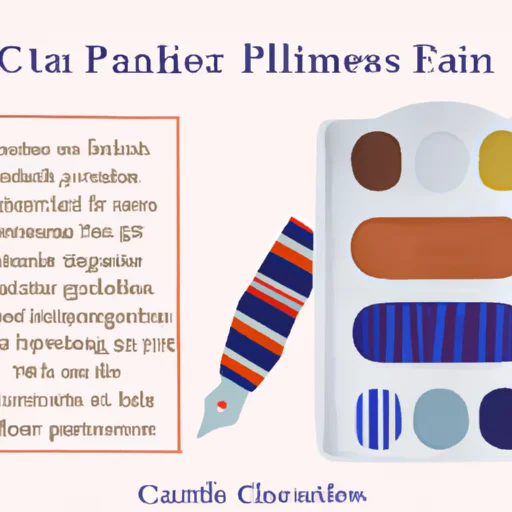So you’re ready to tackle a painting project but don’t want to spend all that time priming? Look no further! In this article, we will reveal the magical paint that requires no priming whatsoever. Say goodbye to the extra step of prepping your surfaces, and hello to a more efficient and time-saving painting experience. Whether you’re a DIY enthusiast or a professional painter, this game-changing product is about to revolutionize your world. Get ready to discover the secret behind the paint that eliminates the hassle of priming.
Table of Contents
What Paint Requires No Priming
Overview of Priming
Priming is an essential step in the process of painting, as it prepares the surface to ensure better adhesion, durability, and a smoother finish for the paint. It involves applying a primer, which is a preparatory coating designed to create a uniform surface for the paint to adhere to. Priming also helps to seal porous surfaces, hide stains, and improve the overall appearance of the paint job. While priming is typically recommended, there are certain types of paint that do not require priming, providing a convenient and time-saving alternative.
Benefits of Using Paint that Requires No Priming
Using paint that requires no priming offers several advantages. Firstly, it saves time and effort, as priming can be a time-consuming process. Skipping the priming step means you can proceed directly to applying the paint, which speeds up the overall painting process. Additionally, it eliminates the need for an extra product, as you won’t have to purchase and apply a separate primer. This can help reduce costs, especially for larger painting projects. Furthermore, paint that does not require priming still provides excellent adhesion and coverage, ensuring a professional-looking finish.
Types of Paint that Do Not Require Priming
There are several types of paint available in the market that do not require priming. These include oil-based paints, water-based paints, latex paints, acrylic paints, chalk paints, and milk paints. Each of these paint types has its unique characteristics and applications, making them suitable for different surfaces and projects.
Oil-based Paints
Oil-based paints are known for their durability, smooth finish, and excellent adhesion. They are typically used for high-traffic areas or surfaces that may encounter moisture or humidity, such as bathrooms or kitchens. Oil-based paints also provide great coverage, making them suitable for covering existing stains or darker colors. As they contain solvents, oil-based paints require proper ventilation during application and have a longer drying time compared to water-based paints.
Water-based Paints
Water-based paints, also known as latex paints, are the most commonly used paint type due to their ease of use and versatility. They are user-friendly, as they are easy to clean up with just soap and water. Latex paints are available in various finishes, including matte, satin, semi-gloss, and high-gloss, allowing you to achieve the desired look for your project. They are quick-drying, have minimal odor, and are environmentally friendly. While some water-based paints may still recommend priming, there are specific types that offer excellent adhesion and coverage on various surfaces without the need for priming.
Latex Paints
Latex paints, as mentioned earlier, are a type of water-based paint. They have become increasingly popular due to their durability, flexibility, and low toxicity. Latex paints can be used on a wide range of surfaces, including wood, drywall, and metals. They offer good coverage and adhere well to properly prepared surfaces, eliminating the need for priming. Latex paints are available in a variety of finishes and colors, making them suitable for both interior and exterior applications.
Acrylic Paints
Acrylic paints are another type of water-based paint that does not require priming. They are known for their vibrant colors, fast-drying properties, and versatility. Acrylic paints can be used on a variety of surfaces, including canvas, wood, paper, and even fabric. They provide excellent coverage and adhesion, making them ideal for art projects, murals, or any other surface that requires a durable and long-lasting finish. Acrylic paints are available in different viscosities, allowing artists to create various textures and effects.
Chalk Paints
Chalk paint is a unique type of paint that has gained popularity in recent years. It is known for its matte, velvety finish and its ability to adhere well to various surfaces without the need for priming. Chalk paint is often used for furniture refinishing and decorative projects. It provides a vintage, distressed look and can be easily distressed or antiqued using sandpaper or wax. Chalk paint is available in a wide range of colors and can be easily applied without any prior painting experience.

Milk Paints
Milk paint is an ancient type of paint that has been used for centuries. It is made from natural ingredients such as milk protein, lime, and earth pigments. Milk paint does not require priming as it penetrates the surface and forms a molecular bond. It provides a unique, rustic appearance and is often used for furniture, cabinets, and other decorative pieces. Milk paint is available in a powdered form and needs to be mixed with water before application. It offers excellent durability and can be easily distressed to achieve an authentic, aged look.
Preparation Tips for Using Paint that Requires No Priming
While paint that requires no priming offers convenience, it is still important to prepare the surface properly for optimal results. Here are some preparation tips to ensure a successful paint job:
- Clean the surface: Remove any dirt, dust, or grease from the surface before painting. This can be done by using a mild detergent or a degreaser.
- Sand the surface: If the surface is smooth, lightly sand it to create a rough texture for better adhesion. Sanding also helps to smooth out any imperfections or previous paint layers.
- Patch any holes or cracks: Fill any holes or cracks in the surface using an appropriate filler or putty. Allow it to dry and then sand it smooth.
- Use a primer if necessary: While the paint itself does not require priming, certain surfaces or conditions may still benefit from using a primer. Consult the paint manufacturer’s instructions or seek professional advice if unsure.
- Use a high-quality brush or roller: Invest in good quality brushes or rollers to ensure even application and a smooth finish. Cheap brushes may result in bristle marks or brush strokes on the painted surface.
- Apply thin coats: It is better to apply multiple thin coats of paint rather than a thick coat. This helps to prevent drips, uneven coverage, and allows each coat to dry properly.

Conclusion
In conclusion, there are various types of paint available that do not require priming, offering a convenient and time-saving alternative for painting projects. From oil-based paints to latex paints, acrylic paints to chalk paints, and milk paints, each type has its unique characteristics and applications.
By properly preparing the surface and following the manufacturer’s instructions, you can achieve professional-looking results with paint that requires no priming. So, next time you embark on a painting project, consider using paint that skips the priming step and enjoy the benefits of a quicker and easier painting process.


